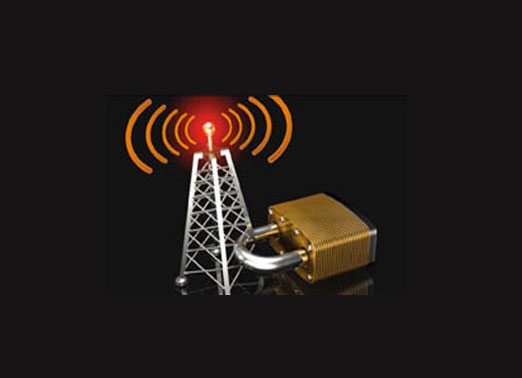Wi-Fi has become a necessity of the digital age, and like everything, everyone loves it even more when it is free. Whether it’s used to access a presentation at a new client meeting, to host a video conference call, or edit and email important documents, public Wi-Fi means nearly anywhere can become an office. Couple this with the fact that there are as many mobile devices on the planet as there are people, and businesses now have the most flexible and tech-saturated workforce in history.
Recent studies have found that 37 per cent of office workers are regularly working remotely two or more days a week.[i] Hotels, cafés, restaurants, trains and airlines allow visitors to remain online. Flexible working has put demands on employees to be connected to corporate systems for as long as possible – even 24/7. Yet these inviting and convenient free hotspots are plagued with vulnerabilities, leaving huge security implications for both users and businesses.
The belief that employees aren’t capable of being trusted to remain secure at work is outdated and the days of scribbling passwords on Post-it notes are long gone. Yet there is still a need to educate when it comes to public Wi-Fi and it remains one of many cyber threats to corporate systems and information. Most employees are now well aware of the dangers of bad password management and endpoint security, even if it is on a subconscious level, as they are used to undertaking their banking, shopping and multiple daily social interactions online. Problems arise when they simply don’t know how to remain secure when working and accessing company systems remotely or if they are not provided with an appropriate security method. By logging in to free Wi-Fi networks – often mindlessly – employees are making information susceptible to yet another form of attack.
Public Wi-Fi networks, by their very nature, are a hotbed for silent cyber attacks, as a business’s sophisticated security systems won’t have any affect on them to protect users. Some may even say that breaching them is child’s play, following reports of a seven-year-old successfully attacking one in less than 11 minutes.[ii] Hotspots are more often than not left unencrypted, so information is openly presented, and without warning can be collected by hackers. By simply entering an email address – and some hotspots don’t even ask for any user information to log on – millions of people can access the same networks. This giveaway of such a personal piece of information to a network that is so easy to access is terrifying and users need to consider where their data is being collected before handing it over.
Free hotspots are easy to set up, and even easier to replicate. One popular method of stealing information is to clone a network. For example, a popular high-street coffee shop will offer customers free Wi-Fi but without needing a password to access it. A hacker will take advantage of this by using the same network name to clone it, thus leaving the customer unaware of which one is genuine. This approach carries two benefits for the hacker as they have control of the clone network, with full access to information being shared on it, and avoid the criminal implications of breaching an existing network.
Cellular networks or VPNs are recommended as safer methods for accessing business applications and documents, but they also still carry major security risks that could lead to valuable information being stolen. The solution is a security system built on a zero knowledge foundation – such as tokenless two-factor authentication (2FA).
The immergence of 2FA has allowed businesses to empower their staff when it comes to corporate security, and acts as an extra layer of protection. It requires not only a username and password, but also something that only the user has on them (i.e. a physical token) to generate a one-time passcode (OTP). With digital crime and internet fraud an increasing concern, such methods of authentication have become increasingly prevalent.
However, whilst physical 2FA tokens can be easy to lose and expensive for companies to distribute and maintain, tokenless 2FA solutions just need an existing device, such as a phone or tablet, to provide employees with passcodes via e-mail, SMS or an app. In other words, workers don’t need to worry about carrying around an additional physical token; they can just make use of the devices they already have.
Yet this is not just a convenience issue; this is a security one too. 2FA doesn’t necessarily guarantee bullet-proof security as any manufacturer that creates cryptographic keys, also known as a seed records, must trust that their copy of the keys can’t be accessed by hackers. This is why a zero knowledge foundation is important, as it makes it impossible for malware on a smartphone to capture the seed records because they are split into two parts: one created on the client server and one generated using characteristics of the mobile device.
The vulnerability of public Wi-Fi means businesses need to give their users a single method of authentication to remove security fears when needing to log in to a host of corporate systems and web-based business applications. Asking employees to login with a variety of passwords, codes and tokens has swiftly become archaic as technology has allowed businesses to adopt much more streamlined and secure solutions.
Albert Einstein once said: “A little knowledge is a dangerous thing.” Whilst connected to a welcoming but insecure public hotspot, even the smallest leak of an email address could lead to cybercriminals learning about a user’s entire digital footprint. From a user perspective, it is easy to become complacent and believe a single password is strong enough to protect corporate systems and data from all cyber threats. The truth is that there is a much bigger picture to consider, and a secure solution – such as 2FA – needs to be adopted to ensure hundreds of other cyber threats, as well as vulnerable Wi-Fi, are nullified.
With the steep growth of remote working and online communication becoming a necessity, using public Wi-Fi is sometimes a temptation employees can’t ignore. Public hotspots are just one of many gateways that allow hackers to attack businesses, but by using 2FA employees are equipped with a consistent authentication method to remain protected against cybercrime, so that sensitive corporate information is no longer put at risk.[su_box title=”Steve Watts, Co Founder of SecurEnvoy” style=”noise” box_color=”#336588″] SecurEnvoy is the trusted global leader of mobile phone based Tokenless® two-factor authentication. Its innovative approach to the multi-factor authentication market now sees millions of users benefitting from its solutions all over the world. Controlling endpoints located across five continents, SecurEnvoy design innovative two step verification solutions that leverage both the device the user carries with them and their existing infrastructure. The solutions are the fastest to deploy and the most secure in the industry. With no hardware or deployment issues, the ROI is dramatically reduced and easily managed.With its channel centric approach, SecurEnvoy continues to expand its revenue and profitability year-on-year through its options to host on-premise, MSP or Cloud. SecurEnvoy has customers in government, healthcare, energy, financial services, insurance, manufacturing, marketing, retail, telecommunications, charity, legal, and construction sectors. Its integration partners include some of the world’s largest blue-chip organisations such as Juniper, AEP, Sophos, Citrix, Fortinet, Cisco, Checkpoint, Palo Alto, and Microsoft.[/su_box]
SecurEnvoy is the trusted global leader of mobile phone based Tokenless® two-factor authentication. Its innovative approach to the multi-factor authentication market now sees millions of users benefitting from its solutions all over the world. Controlling endpoints located across five continents, SecurEnvoy design innovative two step verification solutions that leverage both the device the user carries with them and their existing infrastructure. The solutions are the fastest to deploy and the most secure in the industry. With no hardware or deployment issues, the ROI is dramatically reduced and easily managed.With its channel centric approach, SecurEnvoy continues to expand its revenue and profitability year-on-year through its options to host on-premise, MSP or Cloud. SecurEnvoy has customers in government, healthcare, energy, financial services, insurance, manufacturing, marketing, retail, telecommunications, charity, legal, and construction sectors. Its integration partners include some of the world’s largest blue-chip organisations such as Juniper, AEP, Sophos, Citrix, Fortinet, Cisco, Checkpoint, Palo Alto, and Microsoft.[/su_box]
The opinions expressed in this post belongs to the individual contributors and do not necessarily reflect the views of Information Security Buzz.



